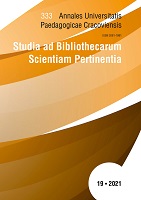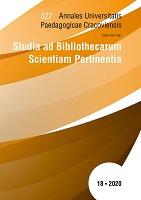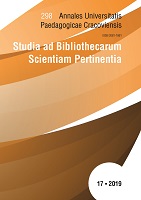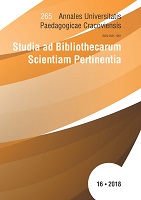
Introligatorstwo krakowskie pierwszej połowy XIX wieku w świetle dokumentów cechowych
The archive documents of the Krakow Bookbinding Guild confronted with the legal acts in force allow us to examine the activity of the guild in the first half of the 19th century. At that time, the guild organisation still held a monopoly on the practice of crafts, and the poor economic condition of the city did not allow for the development of this trade. The number of members of the guild and bookbinding workshops was small, usually no more than ten, and the number of apprentices they employed was also small. In the majority of cases, the workshops were handed down from one generation to the next. In addition, the influx of foreign professionals and master’s qualifications to the guild was small, limited by high registration fees. At the same time, the Krakow bookbinding centre educated many students, and many apprentices from foreign centres arrived in the city
More...


